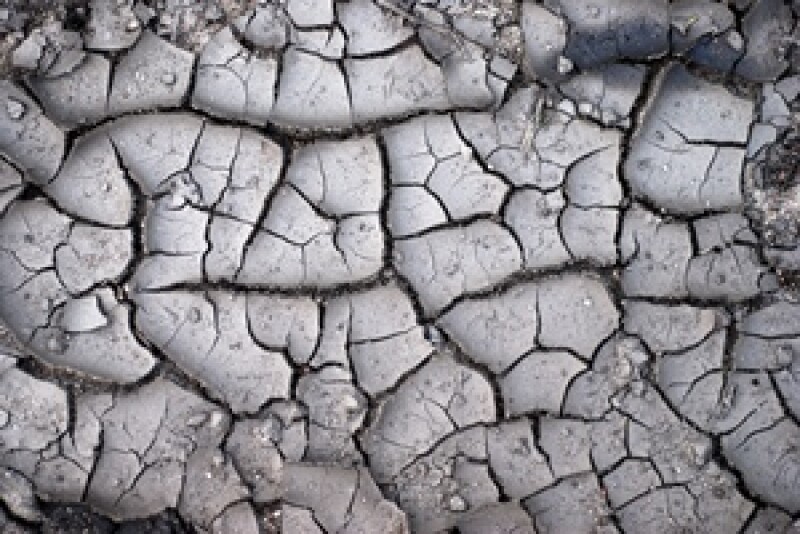As of Oct. 4, 77% of the U.S. was experiencing abnormal dryness/drought, according to the U.S. Drought Monitor, an increase of two percentage points from the previous week. Weekly commentary noted expanding dryness in the lower Mississippi and Ohio river valleys, which is reducing water levels and shipping disruptions to the Gulf. The Seasonal Drought Outlook calls for and expanding area of drought over the Lower Mississippi River valley through the end of the year.
Across the South, the Drought Monitor notes: “Due to a very dry pattern during the past month along with periods of above-normal temperatures, a 1-category degradation was necessary for parts of the Ozarks, lower Mississippi Valley, western Gulf Coast, and southern Great Plains. 30-day precipitation deficits exceed 4 inches in eastern Oklahoma and northwestern Arkansas. Much of these areas along with interior portions of southeastern Texas have received less than 0.10 inch of rainfall during the past 30 days. 30-day SPI/SPEI along with NLDAS and NASA SPoRT soil moisture were the primary indicators used in depicting these degradations along with recommendations from regional partners. Low to dry ponds, poor pastures, and cattle selloffs continue to be major impacts for Arkansas and Oklahoma. Although moderate drought (D1) was added to southwestern Louisiana, a broader D1 coverage was not designated this week due to a strong wet signal at 60 days and lack of support from soil moisture indicators. A couple of small D1 areas were added to Tennessee (near Nashville and northeast of Chattanooga), based on SPI/SPEIs and declining soil moisture.”
In the Midwest, the Drought Monitor notes: “Increasing short-term precipitation deficits, periods of above-normal temperatures, and rapidly declining soil moisture indicators support widespread 1-category degradations throughout a majority of Missouri and parts of Iowa. 30 to 60-day precipitation deficits resulted in an expansion of abnormal dryness (D0) across southwestern Wisconsin and moderate drought (D1) across northern Wisconsin. Based on 30 to 60-day SPIs and support from soil moisture indicators, a slight expansion of D0 and D1 was warranted for southern and eastern parts of Lower Michigan. Meanwhile, across the Ohio River Valley and eastern Corn Belt, increasing 30-day precipitation deficits led to a larger spatial coverage of D0. D1 was expanded in western Kentucky with the addition of severe drought (D2) in the lower Ohio River Valley, consistent with impact reports such as increasing wildfire activity and the requirement of dredging operations along the Ohio River between Paducah and Cairo. Large precipitation deficits dating back 120 days support a large expansion of D0-D2 coverage throughout Minnesota. Lake Minnetonka in Hennepin County is down to its lowest level since the 2012 drought.”
Crop wise, USDA estimates the drought footprint covers 63% of winter wheat acres (down 1 point from last week). Across the Plains, dryness/drought covers 75% of Colorado (down 10 points), 99% of Kansas (unchanged), 90% of Montana (down 5 points), 100% of Nebraska (unchanged), 100% of Oklahoma (unchanged), 93% of South Dakota (unchanged) and 89% of Texas (up 4 points).
For the Plains, the Drought Monitor commentary notes: “Short and long-term NDMC blends, SPIs, soil moisture, and crop conditions support a 1-category degradation for southern South Dakota, southwestern Nebraska, and parts of Kansas. Pond levels are low in Kansas and limited soil moisture is available for winter wheat planting. Abundant recent precipitation (locally more than 2 inches) prompted improvements along the western slopes of the Colorado Rockies. Improvements were also made to northeastern Colorado due to relatively significant precipitation (more than 0.5 inch) this past week. Following heavy precipitation during early August, little to no rainfall for a six week period resulted in an increase in D1 across southeastern Colorado. Beneficial precipitation during the past 30 to 60 days along with improving soil moisture conditions prompted improvements across parts of Wyoming.”

